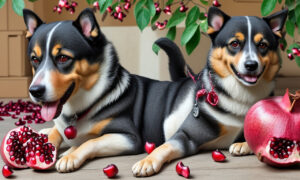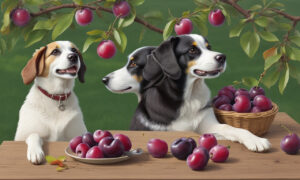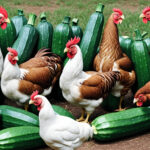Chickens are known for their eclectic tastes, often gobbling up a variety of kitchen scraps with gusto. Among the myriad of food scraps tossed their way, the often discarded banana peel poses an intriguing question: Can chickens indeed enjoy this fibrous leftover? We’re peeling back the layers of this topic to unveil the surprising truth about incorporating banana peels in your chickens’ diet.
For backyard chicken enthusiasts and eco-conscious individuals alike, the idea of supplementing a flock’s diet with banana peels is an appealing thought — less wasteful, more sustainable, and potentially beneficial. But before you start tossing those peels into the coop, it’s important to digest the full spectrum of implications, from nutritional content to safety considerations.
In this comprehensive guide, we will explore every facet of feeding banana peels to chickens. Prepare for a deep dive into the dos and don’ts, the benefits and precautions, and the proper preparation techniques for banana peels as a snack for your feathered friends.
The Nutritional Pecking Order of Banana Peels
When we consider the components of a chicken’s diet, it’s important to prioritize their nutritional needs. So, how do banana peels fit into the picture?
Understanding the Composition of Banana Peels
Banana peels are more than just a slippery nuisance — they are a trove of vitamins and minerals. The subcutaneous layer of the peel is rich in:
- Potassium
- Dietary fiber
- Antioxidants
- Essential amino acids
These components could contribute to the overall health of your chickens, potentially aiding in digestion and enhancing their immune systems.
Potential Health Benefits for Chickens
Feeding banana peels to chickens isn’t just about reducing waste. When given in moderation, these peels could offer healthful benefits such as:
- Improved digestion: Thanks to the fiber content.
- Electrolyte balance: With the high levels of potassium.
- Enhanced feather health: Owing to the array of vitamins.
However, it’s imperative to recognize that these benefits can only be reaped if the peels are prepared and served safely, which leads us to our next crucial consideration.
Prepping Peels: Safety and Serving Suggestions
Before you go bananas over the idea of this new chicken treat, pause to ponder the preparation. A proper approach to serving banana peels to chickens is vital for their safety.
Cleaning and Contamination Concerns
Banana peels often come into contact with pesticides and other chemicals during the growing process. These substances can be harmful to chickens. To ensure the safety of the peels:
- Thorough washing: All peels should be thoroughly rinsed before serving.
- Organic options: Whenever possible, opt for organic bananas to minimize the risk of chemical exposure.
- Visual inspection: Discard any peels with visible signs of mold or rot.
Ideal Serving Size and Frequency
Like any treat, banana peels should be given in moderation. Implement these guidelines:
- Chop or tear the peels: To make them easier for chickens to consume.
- Limit the quantity: Treats, including peels, should not constitute more than 10% of a chicken’s daily intake.
- Occasional treat: Offer banana peels as a once-in-a-while delicacy rather than a staple.
Cooking: Is It Necessary?
The question of whether to cook banana peels before feeding them to chickens arises frequently. Here’s the peel on cooking:
- Raw vs. cooked: There is no strict requirement to cook the peels, but doing so may make them softer and easier to digest.
- Boiling banana peels: If you choose to cook them, a simple boil can soften them without additional fats or seasonings that could be detrimental to chickens’ health.
Considerations and Precautions for Chicken Owners
As with introducing any new food to your flock, caution is key. Here are some essential pointers to keep in mind:
Monitoring Your Flock’s Reaction
Every flock is different, and individual chickens may respond uniquely to new foods. Pay attention to:
- Eating habits: Observe whether or how eagerly your chickens eat the banana peels.
- Health changes: Watch for any signs of digestive upset or other health issues following ingestion.
- Preference: Some chickens might not find banana peels palatable, and that’s perfectly fine.
Thinking About the Big Picture
Feeding your flock shouldn’t be reduced to a spontaneous scramble of scraps. Developing a diet plan that is:
- Balanced: Ensuring your chickens receive all the necessary nutrients from their main feed.
- Supplemented wisely: Using treats like banana peels to enrich rather than imbalance their diet.
- Consistent: Maintaining regular feeding times and habits to avoid stress.
Cultivating a Coop’s Cuisine: Other Kitchen Scraps to Consider
Banana peels may take the spotlight in this conversation, but other kitchen scraps can also be beneficial to chickens. Some additional safe and healthy options include:
- Leafy greens (e.g., kale, lettuce)
- Cooked grains (e.g., rice, quinoa)
- Other fruits and vegetables (e.g., apples, carrots)
Maintain a checklist of safe foods and potentially dangerous ones to ensure your chickens get the best possible supplementary diet.
Summarizing the Snack Situation
To encapsulate our peeling into the surprising world of banana peel treats for chickens, here’s what we’ve uncovered:
- Banana peels can be a nutritious snack for chickens when prepared and served properly.
- The organic route is the best path to avoid pesticide exposure.
- Moderation, as in all treats, is quintessential.
Equipped with this knowledge, you can make a well-informed decision about whether or not to introduce banana peels into your chickens’ snacking routine.
Feeding chickens can be an enjoyable aspect of caring for your flock, and with the inclusion of banana peels, it just might become even more fruitful. If you’re keen on exploring sustainable, nutrient-rich treats for your feathered friends, peeling apart the potential of banana peels might just be the next step in your backyard farming journey.






